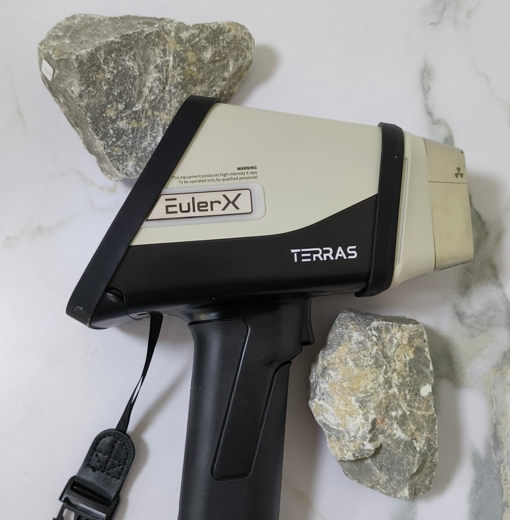
Mining
A high-tech enterprise focusing on the development and application of X-ray technology products, committed to becoming a leading supplier of X-ray industrial testing solutions.
Breaking Ground: Innovations in Ore Analysis Technology
Introduction
In the realm of mining and mineral exploration, the ability to accurately analyze ore samples is crucial for maximizing efficiency, reducing costs, and ensuring sustainable practices. Over the years, technological advancements have revolutionized the way ore analysis is conducted, leading to significant improvements in accuracy, speed, and cost-effectiveness. In this article, we delve into some of the groundbreaking innovations in ore analysis technology that are shaping the future of the mining industry.
X-ray Fluorescence (XRF) Spectroscopy
XRF spectroscopy has emerged as a powerful tool for rapid and non-destructive elemental analysis of ore samples. This technique works by irradiating the sample with X-rays, which cause the atoms in the sample to emit fluorescent X-rays. By measuring the energy and intensity of these emitted X-rays, XRF spectroscopy can identify and quantify the elements present in the sample. Recent advancements in XRF technology have enhanced its sensitivity and precision, allowing for more accurate analysis of trace elements and low concentrations of valuable minerals.

Laser-induced Breakdown Spectroscopy (LIBS)
LIBS is another innovative technique that has gained traction in the field of ore analysis. This method involves focusing a high-energy laser pulse onto the surface of the sample, which creates a plasma plume. As the plasma cools, it emits light at characteristic wavelengths, enabling the identification of elements present in the sample based on their spectral signatures. LIBS offers several advantages, including rapid analysis, minimal sample preparation, and the ability to analyze samples in situ, making it particularly well-suited for field applications.
Hyperspectral Imaging
Hyperspectral imaging involves capturing detailed spectral information from a wide range of wavelengths across the electromagnetic spectrum. By analyzing the unique spectral signatures of different minerals, hyperspectral imaging can provide valuable insights into ore composition, mineralogy, and alteration patterns. This technology allows for rapid and non-destructive mapping of mineral deposits, aiding in exploration efforts and resource assessment. Recent advancements in hyperspectral imaging sensors and data processing techniques have greatly enhanced its utility in the mining industry.
Machine Learning and Artificial Intelligence
Machine learning and artificial intelligence (AI) algorithms are revolutionizing the way ore data is analyzed and interpreted. By training algorithms on large datasets of spectral and geochemical data, AI can identify complex patterns and correlations that may not be apparent to human analysts. This enables more accurate ore characterization, prediction of mineralogical properties, and optimization of mining processes. AI-powered systems can also help in real-time decision-making, allowing mining companies to adapt quickly to changing conditions and maximize operational efficiency.
Advantages of XRF analyzer compared to other ore analysis technologies
X-ray fluorescence (XRF) spectroscopy, as a theoretically produced XRF analyzer, has significant advantages in the field of ore analysis. First of all, it is fast and efficient and can complete sample analysis in a short time, thereby improving analysis efficiency and work efficiency. Secondly, XRF spectroscopy uses a non-destructive testing method, which does not require destroying the sample, retains the integrity of the sample, avoids sample loss or contamination, and saves cost and time. In addition, the XRF analyzer has high sensitivity and accuracy and can accurately measure the content of trace elements in samples, providing reliable data support for comprehensive analysis of ores. Compared with other ore analysis technologies, XRF spectroscopy has a wider application range and is suitable for different types of samples, including solids, liquids and powders, providing a comprehensive analysis solution for ore exploration and mining. In summary, the outstanding advantages of X-ray fluorescence (XRF) spectroscopy in the field of ore analysis include fast and efficient, non-destructive, high sensitivity and wide applicability, providing reliable technical support and data guarantee for the mining industry.

Indeed, the adoption of portable XRF instruments, such as the Terra Scientific EulerX 500, has revolutionized the exploration and mining landscape, streamlining processes that were erstwhile cumbersome and time-consuming. Gone are the days of laborious laboratory analyses; portable XRF instruments have ushered in an era of expediency, ease, and efficiency.
The benefits of portable XRF instruments extend beyond their speed and accuracy, encompassing significant cost savings for mining enterprises. In stark contrast to traditional laboratory analyses, which are both costly and time-intensive, portable XRF instruments deliver results in seconds, empowering companies to make informed decisions expeditiously.
Conclusion
The mining industry is constantly evolving, driven by advancements in technology and a growing emphasis on sustainability and efficiency. Innovations in ore analysis technology play a pivotal role in this evolution, enabling mining companies to extract valuable minerals more efficiently and sustainably. From XRF spectroscopy to hyperspectral imaging and AI-driven analytics, these groundbreaking technologies are reshaping the way ore deposits are discovered, characterized, and exploited. As we look to the future, continued investment in research and development will be key to unlocking new frontiers in ore analysis and resource extraction.
Join Us
Subscribe to our email list for updates & promotions.



